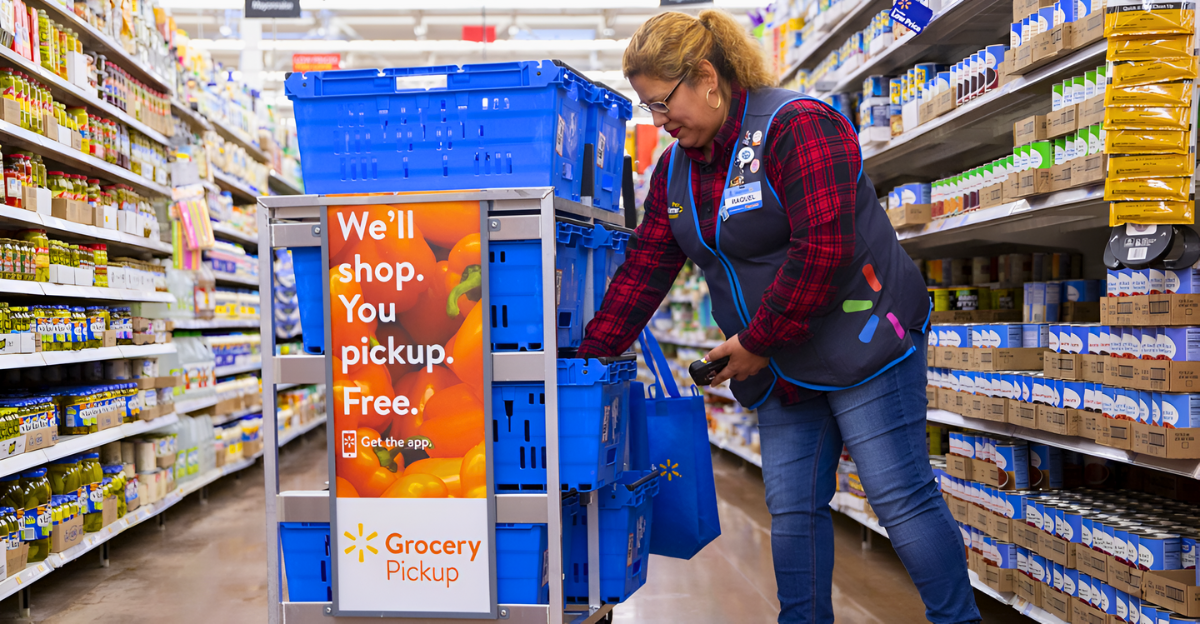
Big changes are coming to Walmart, and they’re not just cosmetic. In the coming months, the retail giant is rolling out four sweeping updates that promise to reshape how over 240 million people shop each week.
This isn’t about faster checkout or flashier aisles. It’s a $500 million push to meet the moment: digital shoppers, inflation-pinched families, and rising expectations. Walmart is betting that the future belongs to retailers who can blend tech-driven convenience with real-world experience. The goal? Keep higher-income shoppers who came during the pandemic, while leveling up service for everyone else.
These four changes don’t just tweak your trip to Walmart, they might redefine what shopping even means. Let’s break down what’s changing, why it matters, and how it could impact your next store visit.
1. AI Shopping Assistant That Actually Understands You

Walmart’s new AI assistant, Sparky, isn’t your typical chatbot. It’s like having a high-IQ personal shopper with recall of 120,000 products. Sparky summarizes reviews, compares items, and even understands photos of products you upload. And people are responding, 27% of shoppers now trust AI advice more than influencer recommendations. Walmart sees this as more than a cool feature; it’s a way to cut through choice overload and build lasting trust with shoppers who want clarity, not clutter.
2. Streamlined Order Fulfilment
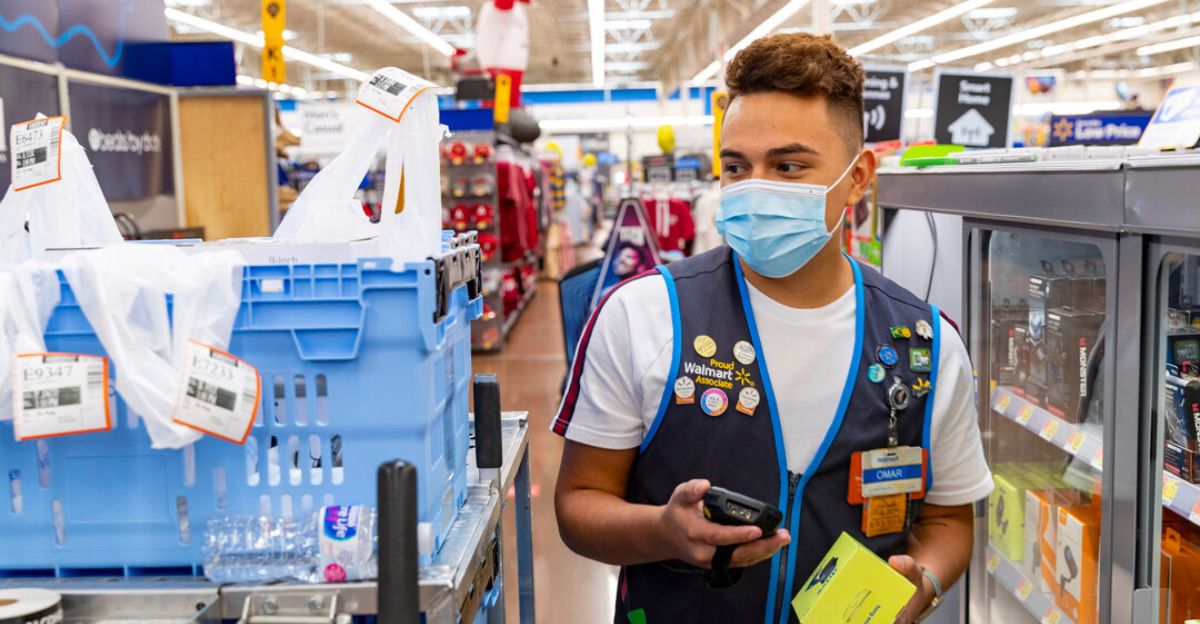
The new shelf labels have “Pick to Light” and “Stock to Light” features. Associates can use their mobile devices to flash LED lights on shelf tags, guiding them directly to products for online orders or restocking. This technology boosts productivity and order accuracy and reduces unnecessary walking by streamlining daily operations, ensuring a smoother, more efficient shopping experience for everyone.
3. Store Redesigns That Change How You Shop

Walmart is spending over $1 million per store to redesign 650+ locations across 47 states. These aren’t just upgrades, they’re psychology in action. Expect wider aisles, private pharmacy rooms, and bigger departments, all laid out to subtly guide your journey. The goal? Boost how long you stay and what ends up in your cart. Early trials show an 18% jump in impulse purchases, and shoppers are happier too. These redesigns quietly reshape how you move, browse, and buy.
4. Sustainability and Efficiency

Walmart is making bold strides toward a more sustainable and efficient future while improving the shopping experience. Walmart aims to power half of its operations with renewable energy, achieve zero waste to landfill in key markets, and ensure all private-brand packaging is 100% recyclable, reusable, or compostable. More than 650 stores are being upgraded with energy-saving lights, equipment, and electric vehicle charging stations, while high-tech distribution centers and automation drive down costs and speed up deliveries.
“The transition to digital shelf labels is a game-changer for Walmart, our customers, and our associates. It is not only about improving efficiency and customer satisfaction, but also about integrating sustainability into our work, in this case, to help reduce operational waste,” said Walmart on their website.
5. Digital Shelf Labels That Erase Price Confusion

Paper price tags are being ditched. Walmart is rolling out digital shelf labels in 2,300 stores by 2026, giving it the power to update prices in real time based on inventory, demand, or even time of day. For shoppers, that means no more pricing surprises at checkout. These labels build confidence, and confidence converts. Walmart says customers are 23% more likely to complete a purchase when prices feel accurate. Loyalty-based discounts through the app are coming too, visible only to returning users.
6. Seamless Reordering and Service Booking

Soon, Sparky will be able to automatically reorder household essentials, book services like in-store pickups, and have groceries delivered. You can even set up automatic deliveries for thousands of everyday products, ensuring you never run out of household staples like pet food, diapers, or cleaning supplies.
“Soon, Sparky will do even more — giving customers the power to customize their experience, from automatically reordering household essentials to booking services that simplify even the most complex shopping tasks,” the company said.
7. Supercenters That Act Like Community Hubs

The “Store of the Future” is already live in Cypress, Texas. Picture in-store clinics, drive-thru pickups, and local vendors, all under one roof. These next-gen supercenters aren’t just for shopping, they’re for gathering. QR codes throughout the store connect to product info, suggestions, and online alternatives, merging physical and digital experiences. Why it works: 70% of Walmart customers prioritize ease of navigation. This new model delivers that while doubling as a neighborhood hub.
8. Expanded Product Selection and Departments

Walmart is dramatically expanding its product selection and reimagining its departments to deliver a richer, more diverse shopping experience. Shoppers will notice expanded departments for pets, clothing, electronics, and more, focusing on showcasing trending brands and high-quality products that appeal to a broader range of customers.
“We have a very high-quality product offering for people, and that invites them in,” Rainey concluded. “It’s a much broader assortment than we historically had,” said chief financial officer, John David Rainey.
9. Pharmacy Redesigns for Privacy and Comfort
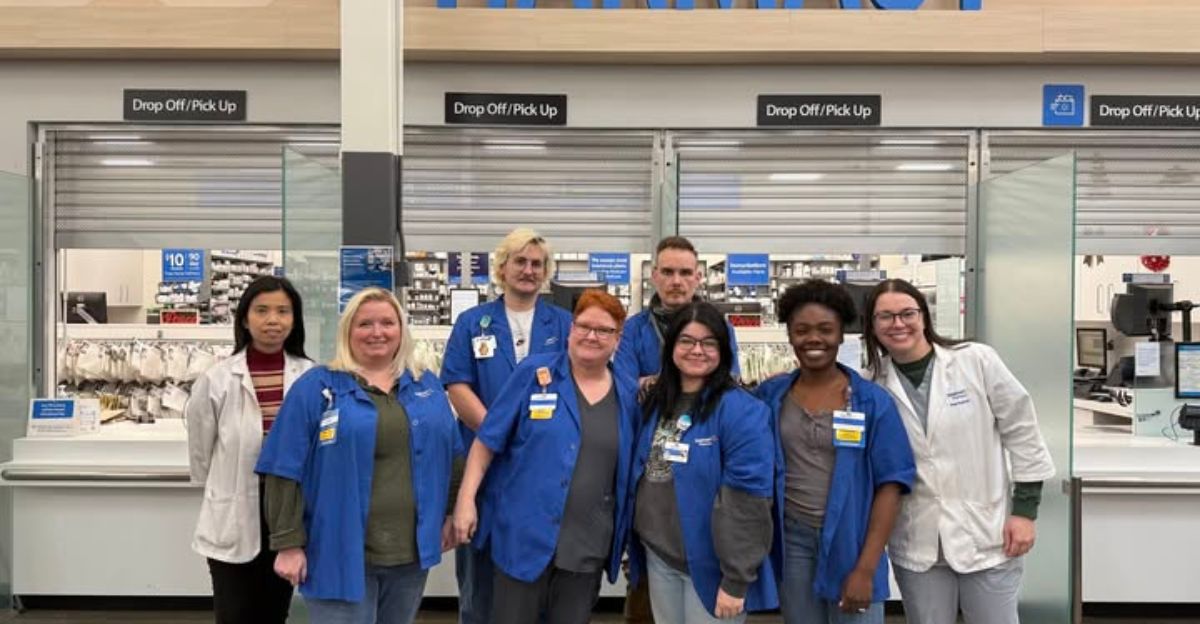
Walmart is taking the pharmacy experience to a whole other level, and clients love it. A new addition to stores is private consultation rooms, which ensure sensitive discussions remain discreet, foster trust, and encourage open communication about health needs.
In addition to the new private rooms, new privacy checkout areas have been introduced to protect personal information during transactions. Wider aisles and a more welcoming layout make the pharmacy area feel less crowded and more accessible, helping people feel more relaxed when picking up prescriptions or looking for advice.
What These Updates Say About Walmart’s Strategy

These four changes make one thing clear, Walmart is positioning itself as more than a big-box store. It wants to be your go-to for everything, from groceries to guidance. Each update reflects a deeper shift: AI to reduce friction, store redesigns to boost time and spend, digital pricing to build trust, and community hubs to embed Walmart into everyday life. It’s a retail strategy aimed at making Walmart feel inevitable, online or off.
Personalized Shopping Experiences

Sparky acts like your personal shopper, offering real-time advice, synthesizing reviews, and suggesting the perfect items for any need, from planning a themed party to finding the right gift or outfit.
Sparky analyzes your purchase history, search behavior, and even contextual factors like location and season to anticipate what you might need next, making shopping faster, easier, and more relevant.
Community Investment and Job Creation
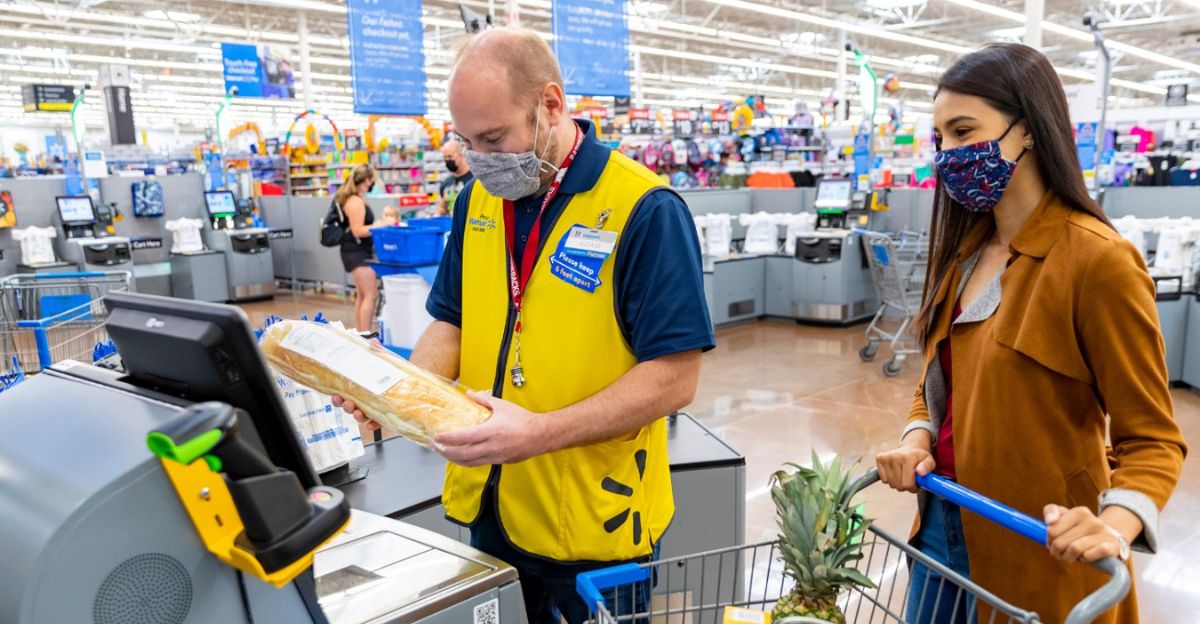
In 2025, the company is rolling out major initiatives to support local organizations, foster economic growth, and create tens of thousands of new jobs. These projects are expected to create tens of thousands of jobs, focusing on hiring locally and providing pathways for career advancement.
The company is also investing in upskilling and promoting its associates, with more than 310,000 employees moving into higher-paying roles in the past two years and new bonus programs rewarding performance and tenure.
Why Convenience Is Becoming King
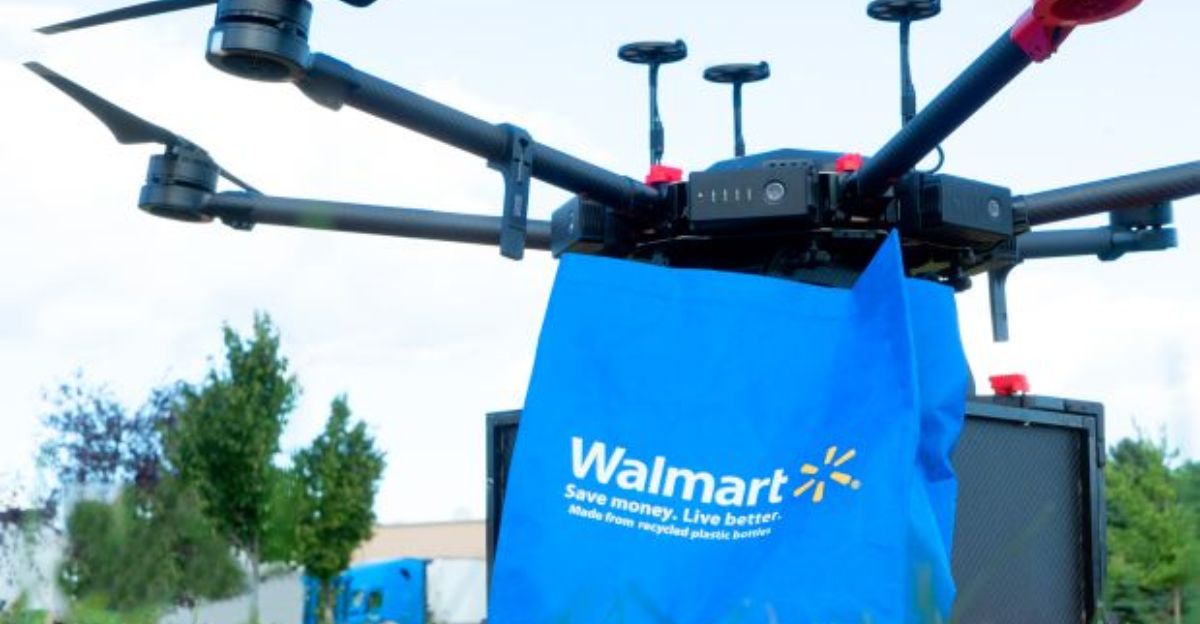
Across every update, one trend stands out: convenience is catching up to cost. Walmart customers still rank affordability highest, but features like fridge deliveries, predictive shopping apps, and 30-minute drone drop-offs are changing the game. These tools aren’t about bells and whistles, they’re Walmart’s answer to decision fatigue. And the more seamless the experience becomes, the more likely customers are to stick around, even when prices aren’t the lowest in town.
A New Look and Feel
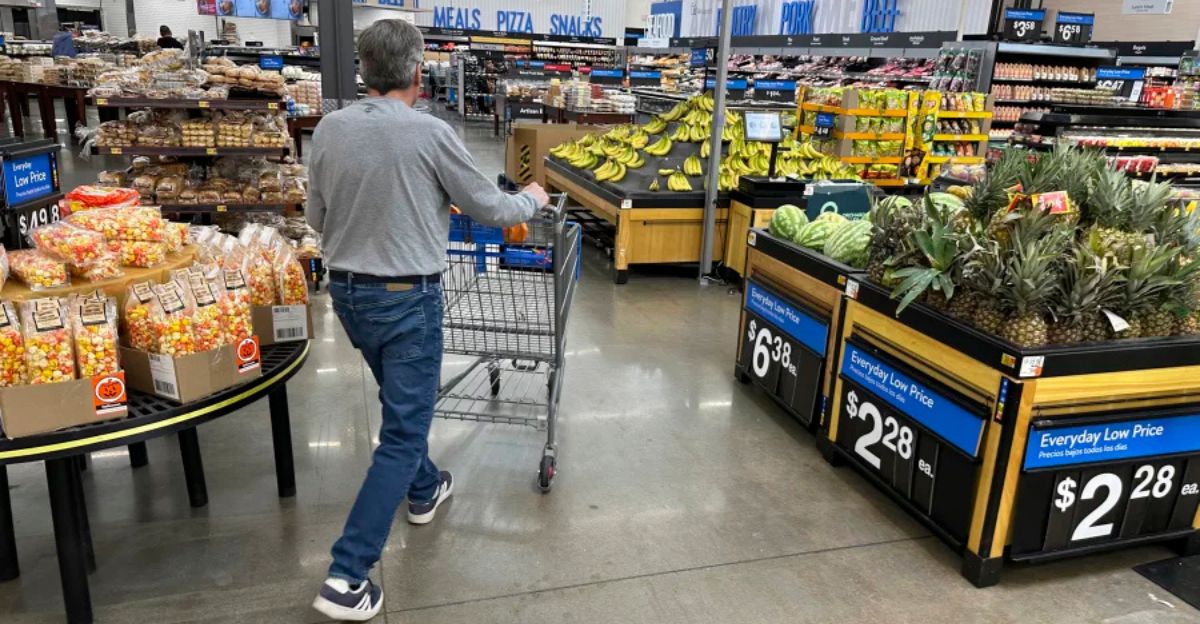
The new look features updated signage, vibrant color palettes, and refreshed store layouts that make navigation easier and highlight key departments and services. This brand refresh extends to employee uniforms, packaging, and even the Walmart app, making the whole Walmart experience feel like a completely new experience.
“While the look and feel of our brand is more contemporary, our refreshed brand identity reflects Walmart’s enduring commitment to both Sam’s principles and serving our customers however they need us. As our customers evolve, we will too. Our Walmart will always be their Walmart, and our brand will always be a testament to how we innovate and change alongside them,” said William White, senior vice president and Chief Marketing Officer.
The Hidden Psychology Behind These Moves

None of this is accidental. Every update, from the brighter aisles to the drone drop zones, taps into deep consumer psychology. People want clarity, ease, and a sense of control. Walmart’s redesigns and tech rollouts are engineered to deliver exactly that while quietly increasing loyalty and lifetime value. This isn’t about shiny new gadgets, it’s behavioral science in retail form. And so far, it’s working.
Enhanced Online Pickup and Delivery
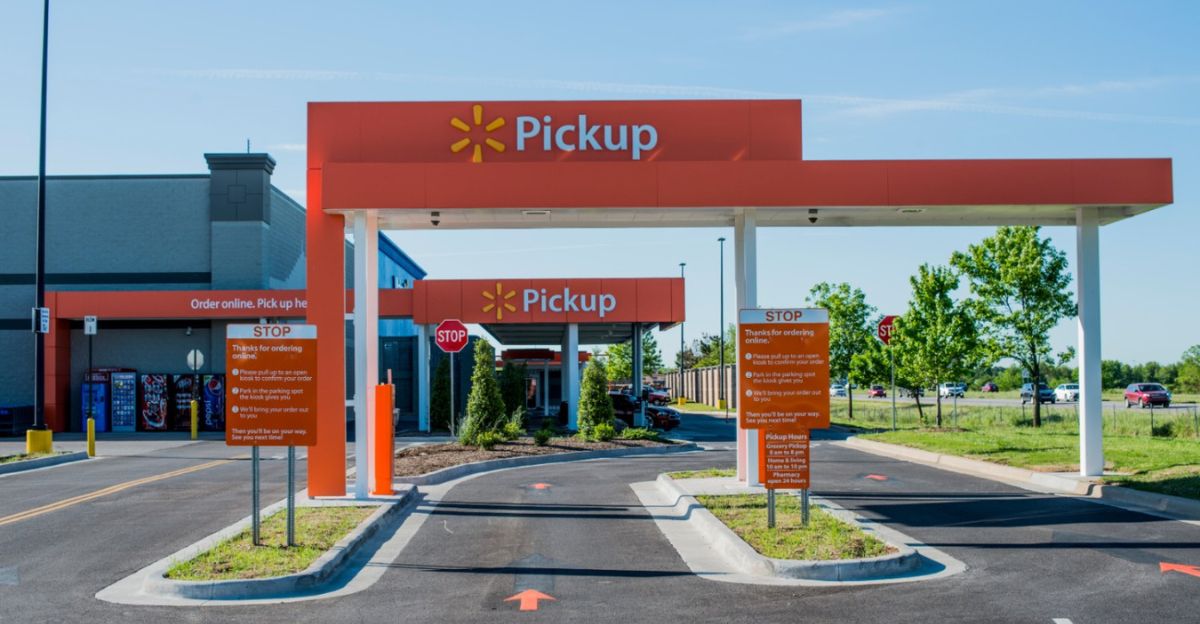
Thanks to a tech-driven overhaul, Walmart will reach 95% of U.S. households with delivery in under three hours by the end of 2025. Customers can place orders online or through the app, check in digitally, and bring their purchases directly to their car in dedicated curbside spots, often in just minutes.
New features like late-night express delivery (available until 10 p.m.), drone delivery in select cities, and no-contact drop-offs add even more flexibility and peace of mind.
What It Means for Smaller Retailers

These shifts at Walmart set a high bar, and smaller retailers are feeling the pressure. With dynamic pricing, AI assistants, and seamless delivery becoming the norm, others will have to adapt fast or carve out niche experiences Walmart can’t replicate. Think hyper-local goods, personalized service, or ethical sourcing. The retail landscape is about to become a game of survival by differentiation.
The Potential Growth for Walmart

The company is forecasting annual sales growth of 3% to 4%, with revenue expected to rise steadily as Walmart modernizes its stores and invests in technology. Walmart’s investments in automation, supply chain technology, and financial services are expected to drive efficiency, deepen customer loyalty, and open new revenue channels.
Despite a cautious outlook due to economic uncertainties and margin pressures, Walmart’s scale, innovation, and focus on value position it to capture market share and deliver steady growth.
A Glimpse Into Shopping’s Future

Walmart’s latest updates aren’t just upgrades, they’re signposts pointing toward what retail will look like in five years. The line between online and in-store is disappearing. Personalization is rising. Trust, once reserved for humans, is being handed to algorithms.
For shoppers, this new era promises faster service, smarter choices, and fewer pain points. But it also raises bigger questions: What are we trading for convenience? And will anyone be able to shop without AI guiding the cart?